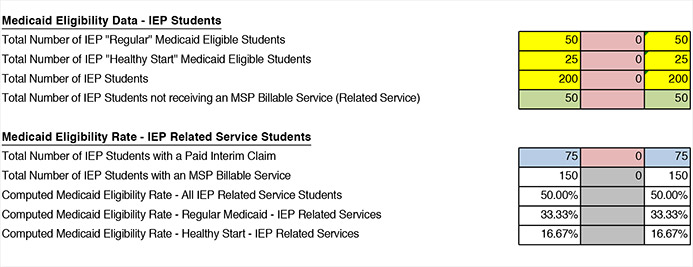Home Health Aide Services in Schools
There has been much talk over the past few years regarding adding “Aide Services” to the Ohio Medicaid School Program (MSP), and I have written about it often. The concern has always been that if Ohio added “Delegated Nursing” and “Personal Care” services to the school program, they would also be required to add the services to all of the State’s Medicaid programs. Adding services to MSP does not cost the state any additional dollars, because school districts have their own “matching funds” (State and Local Tax Revenue). However, when adding these services to Ohio’s entire state Medicaid program, the State of Ohio would be required to pay those non-MSP provider’s matching funds (around 40% of the claim). This could potentially cost Ohio millions of dollars, as all of the other state Medicaid programs represent over 99% of Ohio’s total Medicaid spending. In comparison, the Ohio Medicaid School Program generates about $70 million dollars per year, whereas the entire state’s Medicaid program spends over $23 billion dollars per year. It doesn’t take a mathematician to realize that Ohio’s budget exposure is huge, and that is why they have been reluctant to add these aide services. They have been looking at ways to use existing Medicaid approved service types that are already part of the State plan to help cover the costs of medical aide services being provided in Ohio school districts.
The Ohio Department of Medicaid (ODM) is proposing that medical aide services in schools be covered under the State’s current Medicaid “Home Health Services” plan. Currently, home health services (which includes home health nursing, skilled therapies, and home health aides) are covered by Medicaid only when provided in the home, and/or a licensed day care for a child under age three. Under this proposal, the rule [OAC 5160-12-01(E)(4)] would be revised in order for home health aide services to be covered when provided in the school setting, and it would allow for coverage up to age twenty-one. The rule language would read:
“Home health aide services may be provided by the MCHHA in a school setting for an individual over the age of three and under the age of twenty one, where the individual is in receipt of special education services as indicated in an individualized education plan. “School setting”, for the purposes of this rule refers to a community school, state school, or a setting operated by a local education agency pursuant to OAC 5160-35, a private school or CPST provider setting.”
This is a very interesting concept, and although the medical aides would need to be provided by a “Medicaid Certified Home Health Agency” (MCHHA), the services would be provided at no cost to the district. Many districts already contract for nursing services through an MCHHA, such as Maxim Healthcare. The aide services would be free to the district because the MCHHA would be billing Medicaid directly and would be accepting the Medicaid dollars as payment in full. The no-cost medical aide services would only apply to Medicaid students, but perhaps the 100% savings on the Medicaid students could help offset the costs for the non-Medicaid students. Do not expect all of the billing vendors to support this change, since this would effectively eliminate billing fee revenues for aide services, but we always need to make sure that issues like this are resolved in the best interest of the school districts and not just the best interest of the billing vendor.
The MCHHA aide services could be available as early as July 1, 2016. This methodology may not work for every district, but if setup properly, it could provide trained and certified health aides at no cost to school districts. The Ohio Department of Medicaid (ODM) would like to hear your opinion regarding this potential program expansion. Please send your questions, comments, and concerns to our general email address at TeamHBS@aol.com, and we will consolidate everything into one email to ODM, and then do a “Topic of the Week” follow-up on this issue in April based on ODM’s response.

